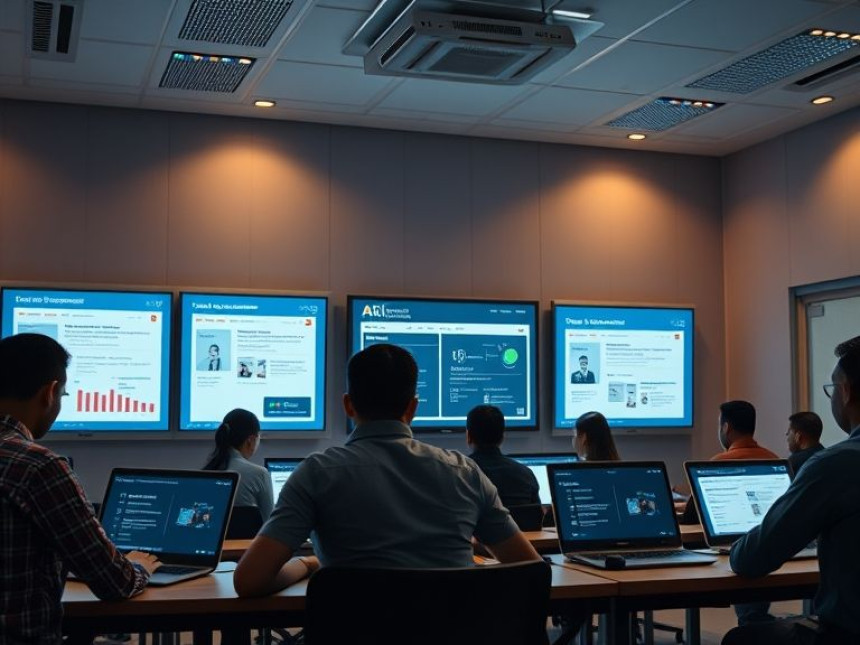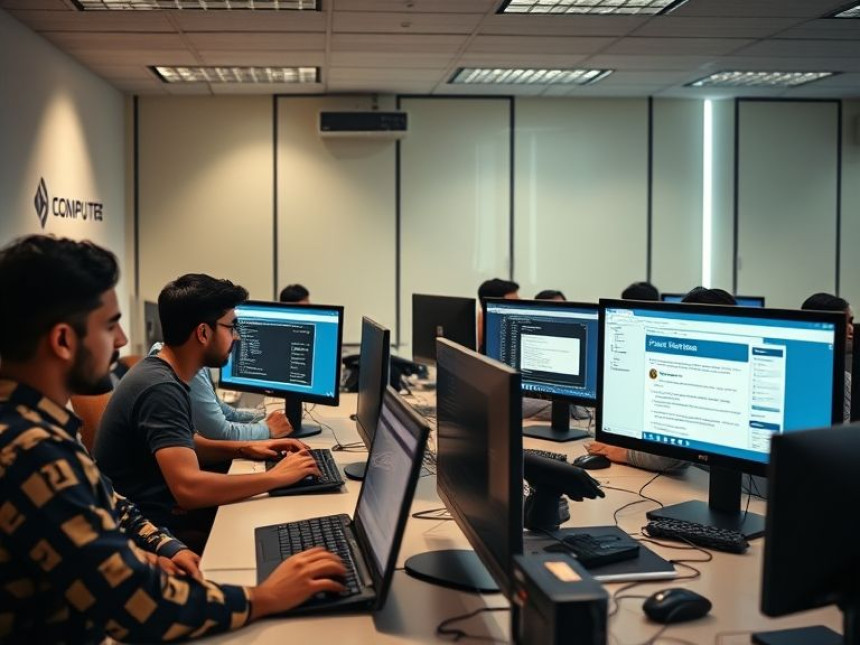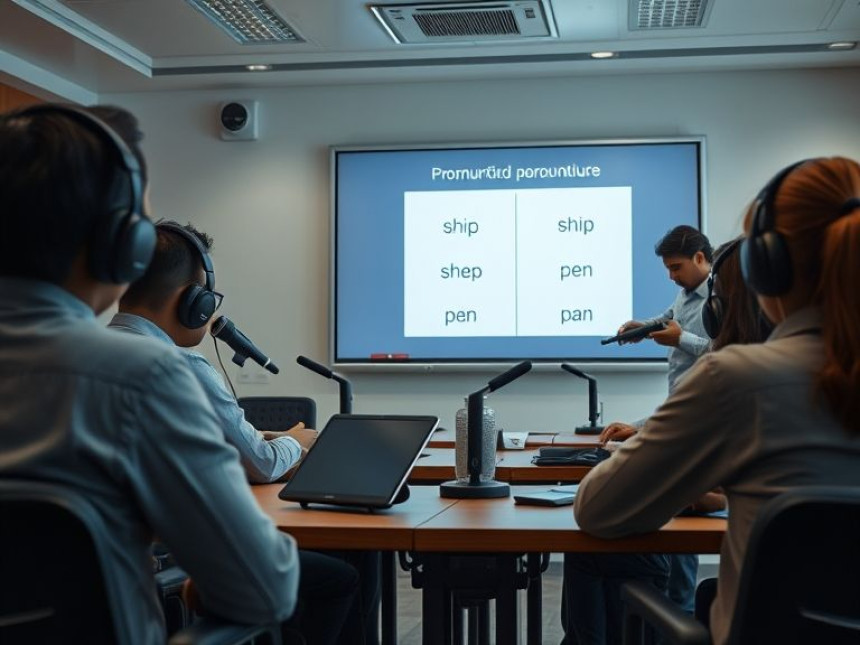
⛓️ Quick Tutorial: Smart Contract Best Practices for Developers
Quick Tutorial: Smart Contract Best Practices for Developers. Get practical lessons and hands-on examples at AIComputerClasses in Indore to master blockchain skills quickly. Follow practical exercises and tool-based examples to learn rapidly. Includes references to tools like ChatGPT, Power BI, Excel, Figma, or Python where appropriate. This article from AIComputerClasses Indore breaks down quick tutorial: smart contract best practices for developers into actionable steps.
⛓️ Quick Tutorial: Smart Contract Best Practices for DevelopersSmart contracts are revolutionizing how businesses, developers, and users interact on the blockchain. These self-executing programs bring automation, transparency, and trust into decentralized systems. However, developing them securely and efficiently requires best practices that every blockchain developer must follow.
In this blog by AI Computer Classes – Indore, you’ll explore practical techniques and professional guidelines to create reliable, optimized, and secure smart contracts. Whether you’re a beginner learning Solidity or a developer aiming to build Web3 applications, this guide simplifies everything step-by-step.
Smart contracts are programs stored on a blockchain that automatically execute when predefined conditions are met. They run on platforms like Ethereum, Polygon, or Solana and remove the need for intermediaries.
✨ Key Features:- Automation: Executes transactions automatically when conditions are satisfied.
- Transparency: Code is visible to everyone on the blockchain.
- Security: Immutable and tamper-proof once deployed.
💡 Example: A crowdfunding smart contract automatically refunds contributors if the funding goal isn’t met.
Avoid writing long, complex contracts. Instead, break them into smaller modules for better readability and maintenance.
pragma solidity ^0.8.0;
contract Voting {
mapping(address => bool) public voters;
function registerVoter(address _voter) public {
voters[_voter] = true;
}
}
✅ Best Practice:
Use separate contracts for logic, data storage, and utility functions.
🔐 Step 2: Always Prioritize SecuritySmart contract bugs can lead to major financial losses. Follow these security best practices:
- Use SafeMath (or Solidity 0.8+ built-in checks) to prevent overflow/underflow.
- Avoid reentrancy attacks by using the Checks-Effects-Interactions pattern.
- Validate all external inputs carefully.
- Limit external calls and use modifiers for access control.
💣 Real Case: The DAO Hack (2016) — $60M lost due to a reentrancy vulnerability.
Gas costs determine how expensive it is to run your contract on the blockchain. To reduce costs:
- Use smaller data types where possible (uint8 instead of uint256).
- Avoid redundant storage writes.
- Pack variables efficiently within structs.
- Reuse common logic through internal functions.
struct User {
uint8 age;
bool active;
}
💡 Pro Tip: Test gas efficiency with tools like Remix IDE’s Gas Estimator or Tenderly.
Testing ensures your contract works as intended and prevents costly bugs.
Use these tools:- Remix IDE – for quick functional testing.
- Hardhat – for automated unit testing in JavaScript.
- Ganache – to simulate Ethereum locally.
npx hardhat test
Write tests for every edge case — from input validation to transaction limits.
Keep your code organized and secure using:
- Git/GitHub for collaboration.
- OpenZeppelin contracts for battle-tested templates.
- Slither, Mythril, or Oyente for static security analysis.
🔎 Auditing Tip: Before deploying a mainnet contract, always conduct both manual and automated audits.
Smart contracts are immutable once deployed, but sometimes updates are needed. Use the Proxy pattern for upgradeable contracts.
// Example using OpenZeppelin Proxy import "@openzeppelin/contracts/proxy/transparent/TransparentUpgradeableProxy.sol";
This allows upgrading logic while keeping user data intact.
Avoid transaction failures by managing errors correctly:
- Use require() for validations.
- Use assert() for invariants.
- Emit events for monitoring actions.
require(balance[msg.sender] >= amount, "Insufficient funds");
This improves both usability and debugging.
A professional smart contract must include:
- Comments explaining logic.
- README with setup instructions.
- Deployment scripts for automation.
💡 Pro Tip: Use NatSpec comments for generating automatic documentation.
Never deploy directly to Ethereum mainnet. Always use testnets like Sepolia, Goerli, or Mumbai (Polygon) first.
npx hardhat run scripts/deploy.js --network sepolia
This helps verify functionality and gas performance under realistic conditions.
At AI Computer Classes – Indore, students practice these best practices with real-world projects using Solidity, Hardhat, MetaMask, and Remix. You’ll learn how to build, test, and deploy your own blockchain DApps with confidence.
💡 Learn from Experts at AI Computer Classes – Indore!
Boost your career with hands-on courses in AI, Data Science, and Blockchain Development.
👉 Join our latest batch now at AI Computer Classes
📍 Located in Old Palasia, Indore
🎯 Final ThoughtsSmart contracts are shaping the future of decentralized technology. But with great power comes great responsibility — especially when managing financial logic. By following these best practices, you can build secure, efficient, and scalable blockchain applications that stand the test of time.
Start your blockchain journey today with AI Computer Classes – Indore, where coding meets innovation!
📞 Contact AI Computer Classes – Indore
✉ Email: hello@aicomputerclasses.com
📱 Phone: +91 91113 33255
📍 Address: 208, Captain CS Naidu Building, near Greater Kailash Road, opposite School of Excellence For Eye, Opposite Grotto Arcade, Old Palasia, Indore, Madhya Pradesh 452018
🌐 Website: www.aicomputerclasses.com





